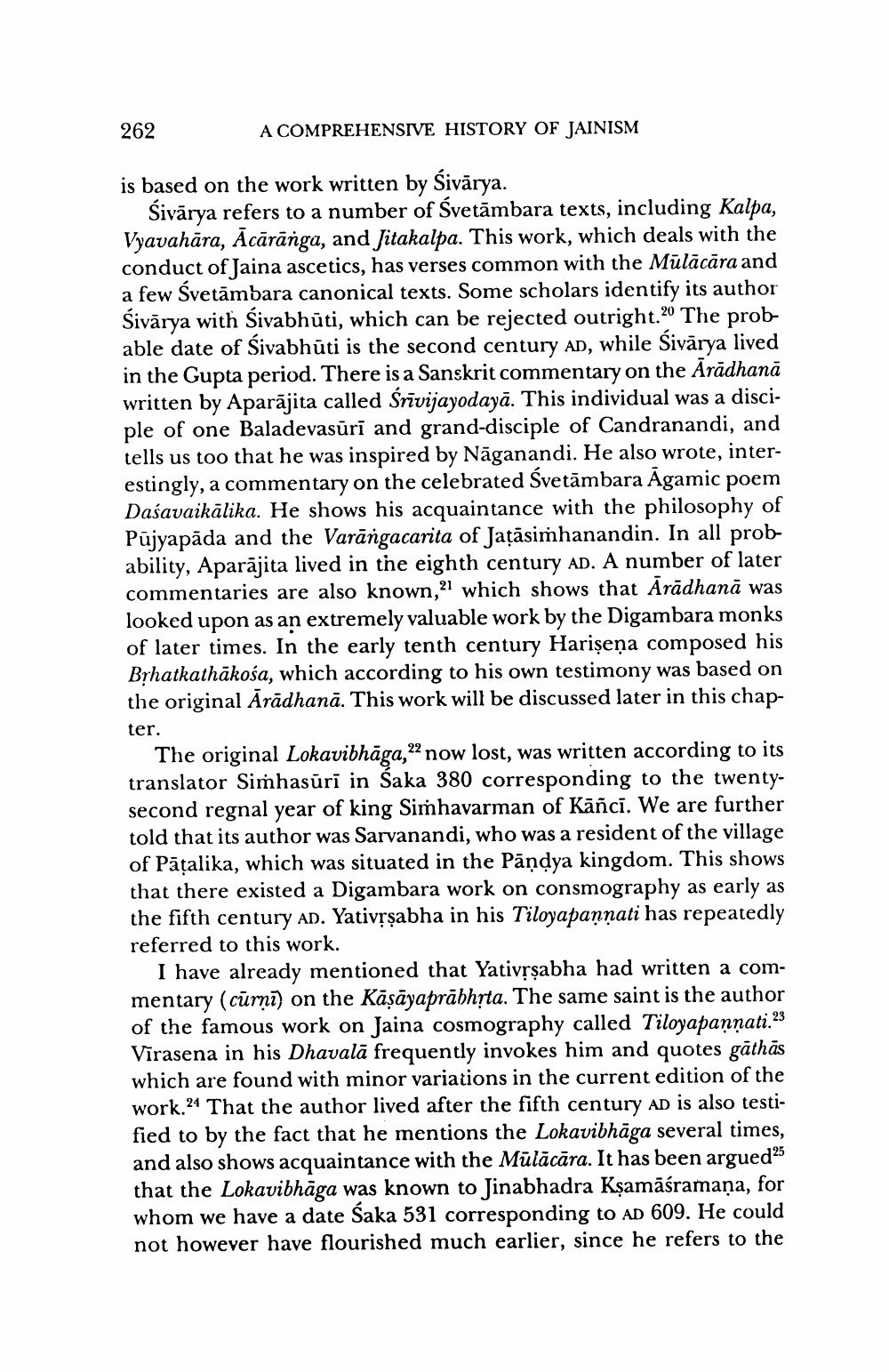________________
262
A COMPREHENSIVE HISTORY OF JAINISM
is based on the work written by Sivārya.
Śivārya refers to a number of Svetāmbara texts, including Kalpa, Vyavahāra, Ācārānga, and Jitakalpa. This work, which deals with the conduct of Jaina ascetics, has verses common with the Mülācāra and a few Svetāmbara canonical texts. Some scholars identify its author śivārya with śivabhūti, which can be rejected outright.20 The probable date of Sivabhūti is the second century AD, while Śivārya lived in the Gupta period. There is a Sanskrit commentary on the Ārādhanā written by Aparājita called Śrīvijayodayā. This individual was a disciple of one Baladevasūrī and grand-disciple of Candranandi, and tells us too that he was inspired by Nāganandi. He also wrote, interestingly, a commentary on the celebrated Svetāmbara Agamic poem Daśavaikālika. He shows his acquaintance with the philosophy of Pūjyapāda and the Varāngacarita of Jațāsimhanandin. In all probability, Aparājita lived in the eighth century AD. A number of later commentaries are also known,21 which shows that Ārādhanā was looked upon as an extremely valuable work by the Digambara monks of later times. In the early tenth century Harișeņa composed his Byhatkathākośa, which according to his own testimony was based on the original Arādhanā. This work will be discussed later in this chapter.
The original Lokavibhāga, 22 now lost, was written according to its translator Simhasūrī in Śaka 380 corresponding to the twentysecond regnal year of king Simhavarman of Kāñci. We are further told that its author was Sarvanandi, who was a resident of the village of Pāțalika, which was situated in the Pāņdya kingdom. This shows that there existed a Digambara work on consmography as early as the fifth century AD. Yativrsabha in his Tiloyapannati has repeatedly referred to this work.
I have already mentioned that Yativrşabha had written a commentary (cūrņi) on the Kāṣāyaprābhịta. The same saint is the author of the famous work on Jaina cosmography called Tiloyapannati. 23 Virasena in his Dhavalā frequently invokes him and quotes gathās which are found with minor variations in the current edition of the work.24 That the author lived after the fifth century AD is also testified to by the fact that he mentions the Lokavibhāga several times, and also shows acquaintance with the Mūlācāra. It has been argued 25 that the Lokavibhāga was known to Jinabhadra Kșamāśramaņa, for whom we have a date Śaka 531 corresponding to AD 609. He could not however have flourished much earlier, since he refers to the




